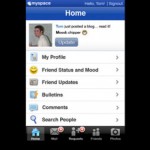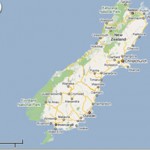 Barcelonan — With more than four billion mobile phones in use globally, Nokia, the leading mobile device maker, on Tuesday at its annual Nokia World conference in Barcelona, has announced the latest versions of its upcoming mapping and navigation platform, along with a new messaging service in an effort to build out its mobile services.
Barcelonan — With more than four billion mobile phones in use globally, Nokia, the leading mobile device maker, on Tuesday at its annual Nokia World conference in Barcelona, has announced the latest versions of its upcoming mapping and navigation platform, along with a new messaging service in an effort to build out its mobile services.
A beta of this newest edition of Nokia Maps now allows users to plan their journey in advance on a PC and synchronize the route with their mobile phone. Currently, the pre-planning function is only available for Windows-based devices. Nokia has also combined the latest version of Nokia Maps more closely with its PC-based service Ovi.
The upgraded Nokia Maps also offers features, such as high-resolution aerial images and 3D landmarks. The new software also empowers users to share their location using GPS.
“Enabling Nokia Maps to synchronize my favorite places between my mobile and PC is the main reason for anyone to switch from other personal navigation devices to Nokia Maps,” said Michael Halbherr, vice president of Nokia location-based experiences.
The latest service also provides greater access to concurrent information such as camera alerts, safety spots and traffic information for selected countries.
Some of the most admiring new features available include: the facility to purchase turn-by-turn car navigation guidance; instant access to real-time information about traffic in certain countries; access to Wcities, an event guide that gives real-time information for events and movies in some 450 destinations; and the ability to see multiple entrances to the same underground subway stations in certain cities.
Nokia has also indicated it is updating its Nokia Messaging client so that it adds support for consumer e-mail and instant messaging from Yahoo Mail, Yahoo Messenger, Windows Live Hotmail, Gmail, Google Talk, AOL Mail, and thousands of international ISPs. The service is also incorporated with an Ovi address and offers users 1 gigabyte worth of storage. It also utilizes a single sign-in on their cell phones.
The beta version of Mail on Ovi will roll out globally this month in 12 languages — including English, Spanish, Portuguese, French, German, Hindi, Bengali, Tagalog, Bahasa Indonesia and Bahasa Malaysia — on all currently shipping Nokia Series 40 devices.
The Nokia Messaging service will be available in the first quarter of 2009 in the UK, Australia, Finland, Germany, the Netherlands, Singapore, Spain and Venezuela and in select countries later in the year. The service is currently available for free as a limited-period beta trial, with instant messaging and support for Nokia Series 40 devices due in the second half of 2009.
“The essential commitment to the consumer is that if you buy a Nokia device we at Nokia will make sure you will be able to access whatever e-mail account or instant messaging account that you may have,” said Tom Farrell, director of software and services sales at Nokia.
Nokia views this as a major market; the goal is to reach the point where e-mail and instant messaging are as ubiquitous and easy to use as SMS (Short Message Service) is today, according to Farrell.
“To date mobile messaging has been a niche activity where very few consumers have had it if you think about it, and we want hundreds of millions to use it,” said Farrell.
The N97 phone touted as the first truly mobile pocket computer, introduces a new feature (and a new buzzword): So-Lo or social location, a marriage of the user’s social networking needs to his or her current location as sensed by the phones GPS navigation tool. It includes smart phone features like full QWERTY keyboard and professional Carl Zeiss photo optics.
“You are in control,” Nokia CEO Olli-Pekka Kallasvuo, informed lay users, “There is not one Internet, but one billion Internets, each one shaped differently to suit the user.” Technologies like touch screens would be trickled down rapidly so that they would be available to owners of the cheaper models, he suggested.
The day also marked formal completion by Nokia of its acquisition of Symbian, the leading mobile operating system provider, paving the way for its launch of the Symbian Foundation, together with mobile players AT&T, LG, Motorola, NTT Docomo, Samsung, Sony Ericsson, ST-NXP Wireless, Texas Instruments and Vodafone. By 2010, Nokia would make Symbian fully open source, delegates were informed.
Nokia will soon start a mid-level phone, the 6260 slider, that will bring GPS as well as browsing to a handset that might cost less than Rs. 7,000 in India, added Nokia India Vice President, Shiv Shivakumar. The company was using its presence in India to take the concept of personal internet further: later this month, it would team with Idea Cellular to offer agricultural and weather information to farmers in six test districts and three languages, he added.
The U.S. is on Nokia’s target list, but no launch date has been finalized, according to Farrell.


